In the arrangements A and B shown in Fig 4.7, pins P and Q are fixed to a metal loop and an iron rod with the help of wax. In which case are both the pins likely to fall at different times? Explain.
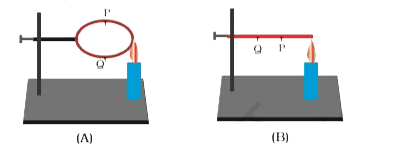
In the case 'A', the heat moves in both directions So, the pins, P and Q will stop working simultaneously. In the case 'B', the pin P will not succeed before the pin Q. The reason behind is that the heat will reach at pin P first. So therefore, (B).
Topper's Solved these Questions
- BOOK - NCERT EXEMPLARCHAPTER - HEATEXERCISE - VERY SHORT ANSWER QUESTIONS4videos
HEAT
- BOOK - NCERT EXEMPLARCHAPTER - ELECTRIC CURRENT AND ITS EFFECTS EXERCISE - LONG ANSWER QUESTIONS7videos
ELECTRIC CURRENT AND ITS EFFECTS
- BOOK - NCERT EXEMPLARCHAPTER - LIGHT EXERCISE - LONG ANSWER QUESTIONS3videos
LIGHT
Similar Questions
Four pins (I, II, III, and IV) are fixed to a metallic rod with the help of wax. The rod is heated at one end.

Which of the following pins would drop first?View SolutionLook at Fig 4.9.
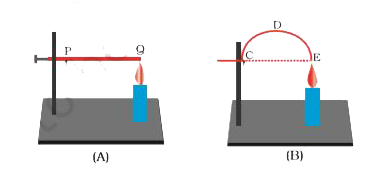
The length of wire PQ in case of A is equal to the diameter of the semicircle formed by the wire CDE, in case B. One pin is attached to each wire with the help of wax as shown in Fig 4.9. Which pin will fall first? Explain.View Solution
Knowledge Check
- Question 1 - Select One
In the arrangement shown in Fig the ends P and Qof an unstrechable string move downwards with uniform speed U pulley A and B are fixed Mass M moves upward with a speed
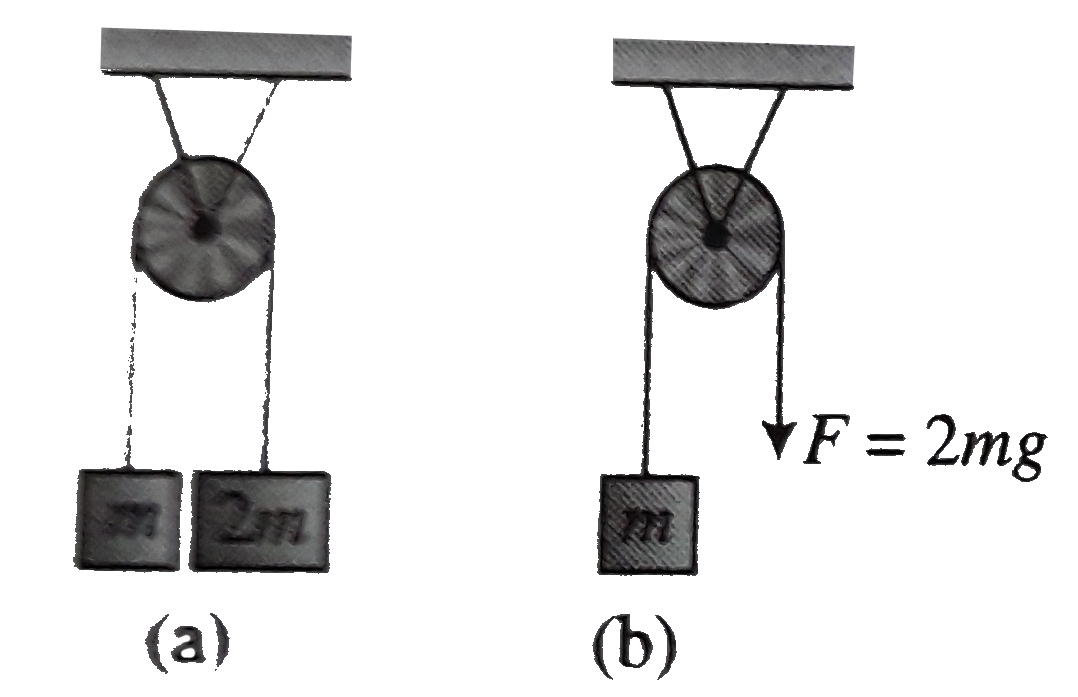 A2UcosθBU/cosθC2U/cosθDUcosθ
A2UcosθBU/cosθC2U/cosθDUcosθ - Question 2 - Select One
In the arrangement shown in the Fig, the ends P and Q of an unstretchable string move downwards with uniform speed U. Pulleys A and B are fixed.
Mass M moves upwards with a speed
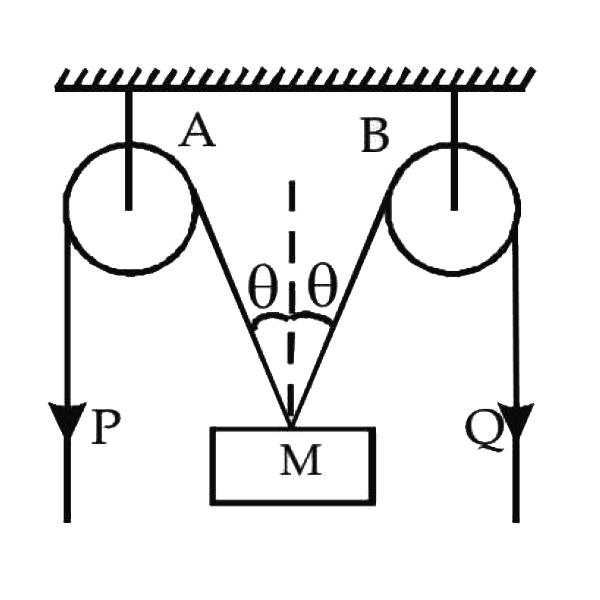 A2UcosθBU/cosθC2U/cosθDUcosθ
A2UcosθBU/cosθC2U/cosθDUcosθ - Question 3 - Select One
Arrange the following steps in sequential order ot show that the conduciton of heat is different in different conductors
(a) take two identical rods one is copper and the other is iron
(b) The ends of the two rods are heated with the same spirit lamp
(c ) fix some nails on the rods with the help of wax at equal distances
(d) The nails near to the flame first from the copper rod and then from the iron rod.AACDBBABCDCACBDDADBC
A uniform square plate has mass M and side length a. It is made to oscillate in vertical plane in two different ways shown in figure (A) and (B). In figure (A), the plate is hinged at its upper corners with the help of two mass less rigid rods each of length a. The rods can rotate freely about both ends.
(a)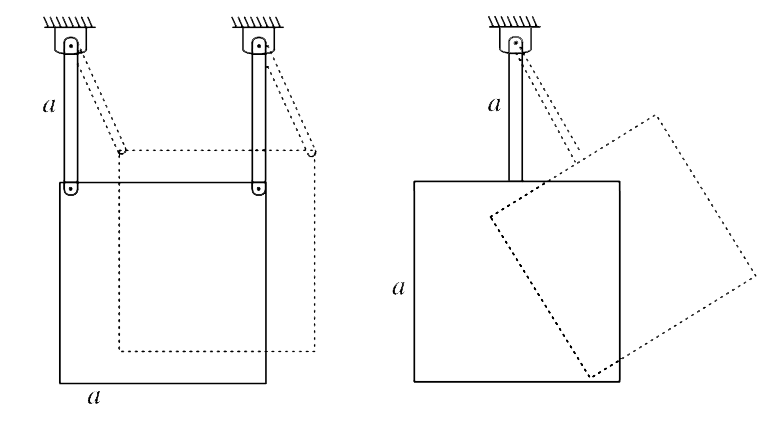
(b)
In figure (B) the plate is rigidly connected at the centre of its top edge to a mass less rod of length a. The rod can rotate about its upper end only. In both cases the plate is pushed from its equilibrium position so that centre of mass of the plate acquires a speed V. In which case will the centre of mass of the plate rise to a greater height. There is no friction.View SolutionTwo identical unifrom rods OA and OB each of length l and mass m are connected to each other by a massless pin connection (both the rods can rotate about O which is free to move), that allows free rotation. The assembly is kept on a frictionless horizontal plane. Now two point masses each of mass m moving with speed u perpendicular to the AB and hit the assembly inelastically at points A and B as shown in the figure.
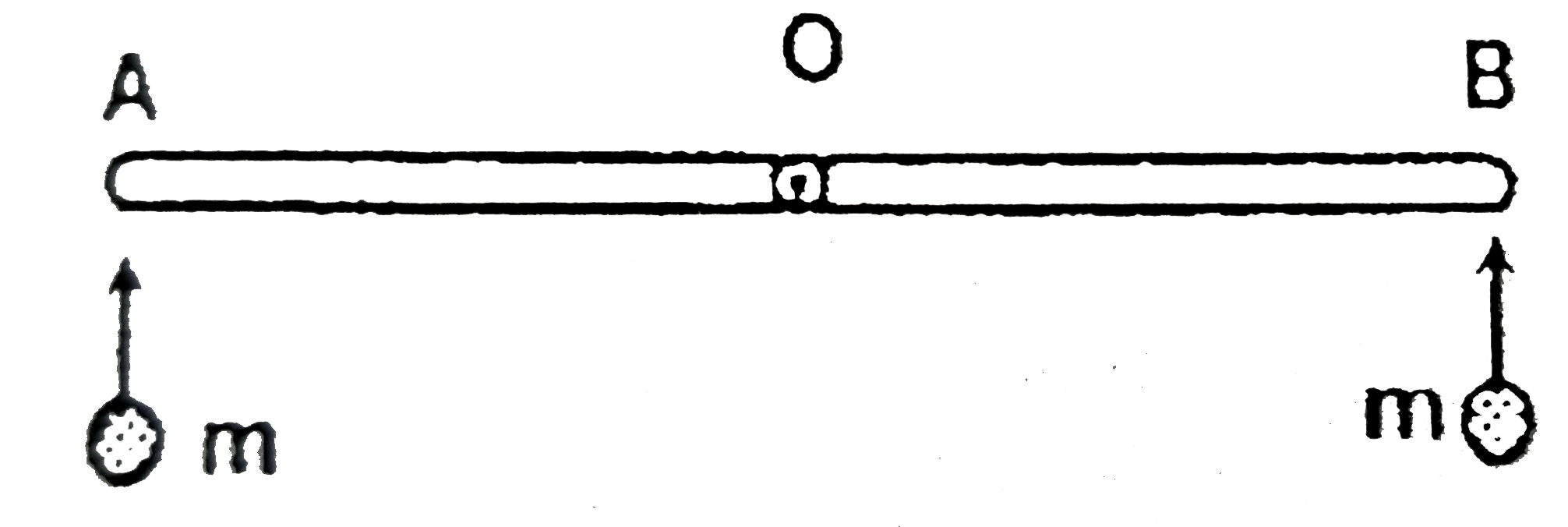
Find the angular speed of rods just after the collisionView SolutionTwo identical unifrom rods OA and OB each of length l and mass m are connected to each other by a massless pin connection (both the rods can rotate about O which is free to move), that allows free rotation. The assembly is kept on a frictionless horizontal plane. Now two point masses each of mass m moving with speed u perpendicular to the AB and hit the assembly inelastically at points A and B as shown in the figure.
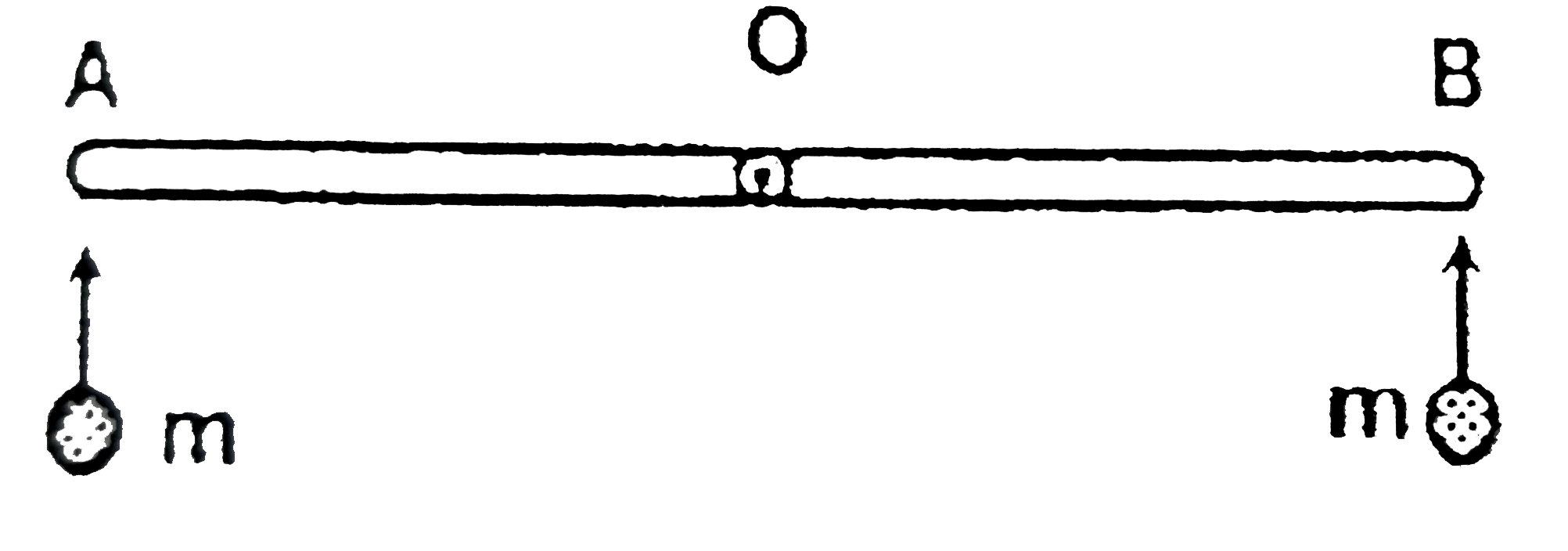
Find the speed of centre of rod AO just after the collision.View SolutionIn the figure shown a conducting rod of length l, resistnace R and mass m is moved with a constant velocity v.The magnetic field B varies with time t as B=5t, where t is time in second.At t=0 the area of the loop containing capacitor and the rod is zero and the capacitor is uncharged.The rod started moving at t=0 on the fixed smooth conducting rails which have negligible resistance.Find (i)The current in the circuit as a function of time t.
(ii)If the above system is kept in vertical plane such that the rod can move vertically downward due of gravity and other parts are kept fixed and B=constant =B0.then find the maximum current in the circuit.
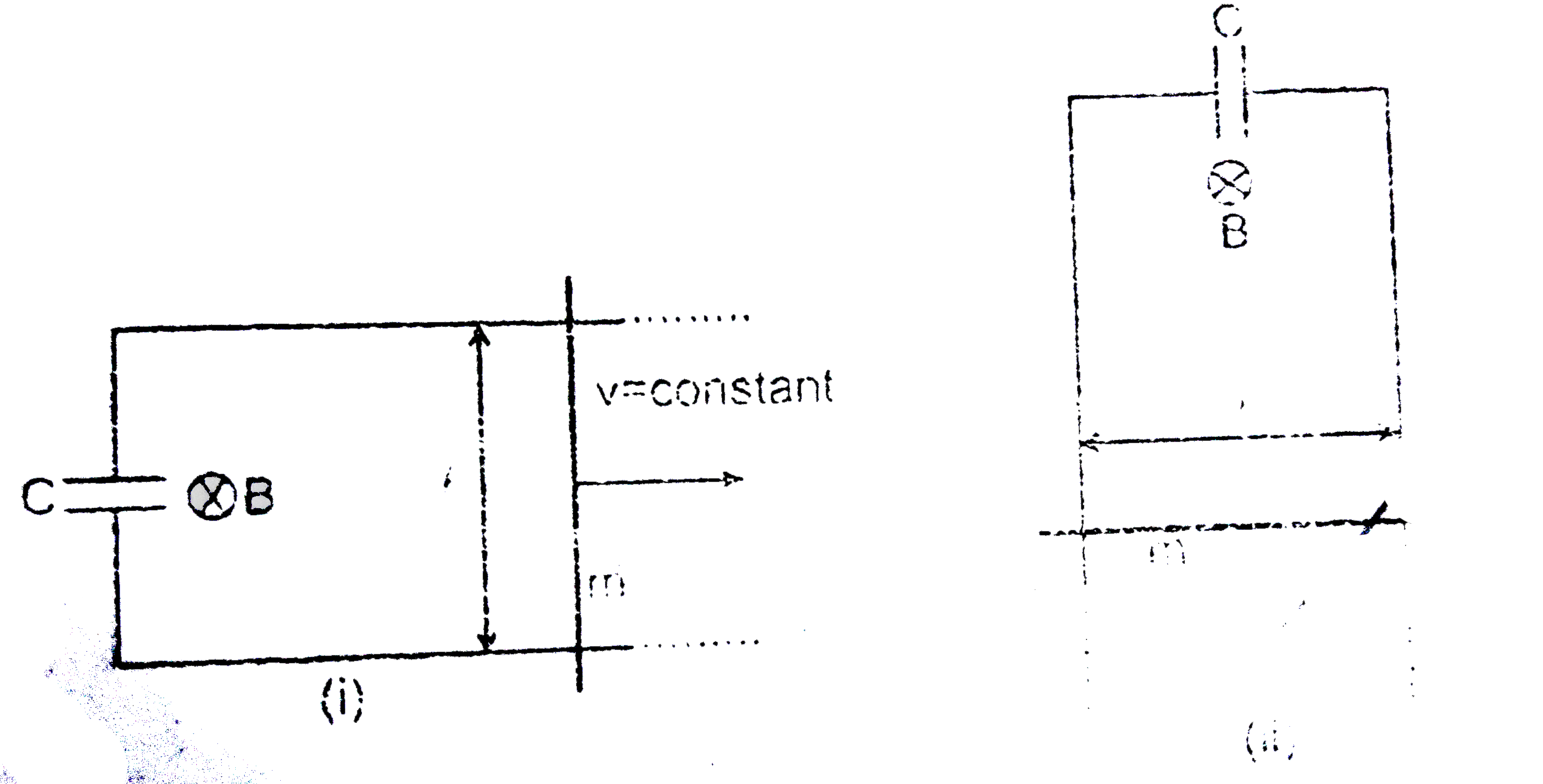 View Solution
View SolutionArrange the following steps in sequential order ot show that the conduciton of heat is different in different conductors
(a) take two identical rods one is copper and the other is iron
(b) The ends of the two rods are heated with the same spirit lamp
(c ) fix some nails on the rods with the help of wax at equal distances
(d) The nails near to the flame first from the copper rod and then from the iron rod.View Solution

